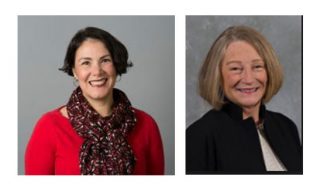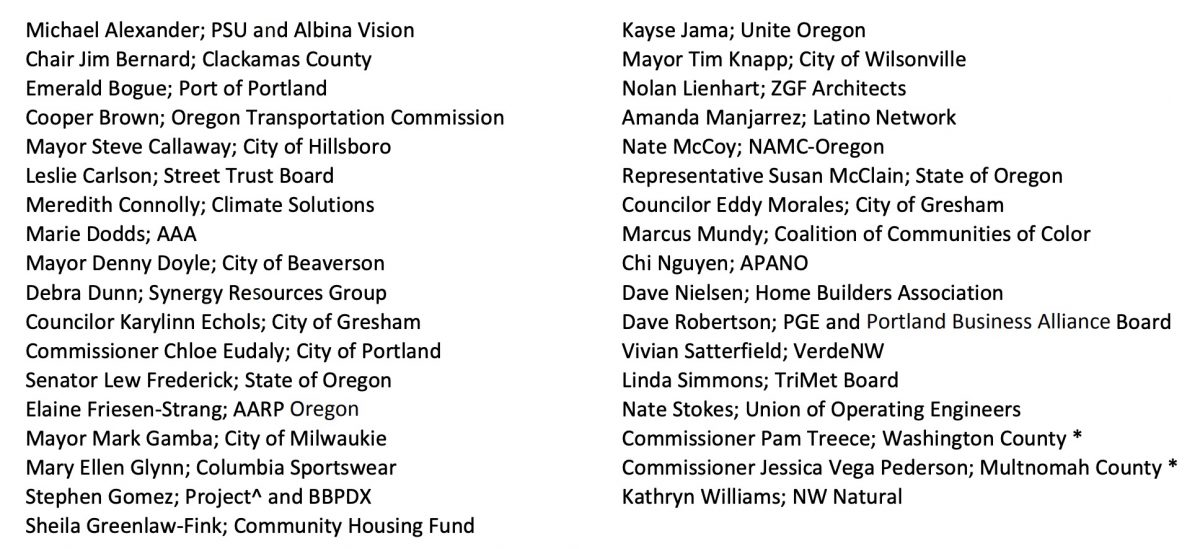
We’re now three months since the official launch of Metro’s effort to raise funds for transportation infrastructure via a bond measure that could go to voters in 2020.
This is likely to be the most consequential transportation funding decision in our region’s history. With activism heating up and outlines of the measure being drawn, it’s time to put T2020 on your radar.
The Basics

As the elected government that oversees federal transportation spending for the entire region, Metro is a natural leader of this effort. The agency likes their chances to pass a transportation bond given that voters approved a $653 million bond for affordable housing back in November. According to The Oregonian, the total ask could be as much as $20 billion when all is said and done.

Back in February, Metro kicked off the planning process to decide where and how to spend that money when the 35-member Transportation Funding Task Force met for the first time. They’ve met five times since then. Multnomah County Commissioner Jessica Vega Pederson and Washington County Commissioner Pam Treece are co-chairs.
Advocacy
f
Will this thing be full of freeway expansions and leave crumbs left for everything else (like the State of Oregon’s 2017 transportation package)? Or will it be bold enough to smash the driving-centric status quo that’s destroying the earth and our lives more each passing day?
With so much at stake, transportation advocates from all backgrounds hope to influence the process. As expected, a key tension in this bond debate is how much of the measure’s revenue will go toward projects that increase access to driving, versus projects that encourage walking, biking, and transit.
The Getting There Together Coalition formed in 2017 and includes 25 organizations who want to make sure the bond makes the region more “livable for all”. Members include The Street Trust, WashCo Bikes, Oregon Walks, AARP Oregon, Disability Rights Oregon, APANO, and so on. Specifically, their priorities include: safety, public transit, a transparent process, prevention of displacement, and increasing access to transportation.
During public comment sessions at previous Task Force meetings, people have spoken most loudly about how the bond measure must aggressively tackle the issue of climate change. No More Freeways, a group that has come to prominence by organizing strong opposition to ODOT’s I-5 Rose Quarter Project, is also engaged around T2020. The group live-tweeted the April Task Force meeting and they have organized climate and Green New Deal advocates to show up to the May meeting which takes place this evening (5/15).
Advertisement
The Work So Far
It’s still early days, but the Task Force has already begun to sketch out “corridors” where funds would be targeted. This shouldn’t be a surprise, given that Metro is a regional entity and wants to invest in infrastructure that crosses jurisdictional lines. And the “corridor” lens is already familiar to the agency. Metro’s 2014 Regional Active Transportation Plan identified 24 “mobility corridors” region-wide.
Based on input from the Task Force, Metro staff identified 75 potential investment corridors. After a scoring exercise, 26 corridors were placed in three different tiers: equity, potential for high transit ridership, and “high safety need.” (You can read a description of each corridor here.)
Here’s the breakdown of each category:
• NE/SE MLK/Grand Ave
• Tualatin-Valley Highway
• I-5, downtown Portland
• SW 185th Ave
• Downtown Portland
• SE Foster Blvd
• SE Powell Blvd
• NE/SE 122nd Ave
• NE/SE 162nd Ave
• N/NE Columbia Blvd
• 82nd Ave
• Tualatin Valley Highway
• SE McLoughlin Blvd
• SE Powell Blvd
• Burnside Street
• Downtown Portland
• NE/SE Martin Luther King Jr. Blvd./Grand Ave
• NE/SE 122nd
• Sandy Blvd
• SW 185th Ave
• SE Division St
• 82nd Ave
• 122nd Ave
• Powell Blvd
• NE/SE MLK/Grand
• SW 185th Ave
• NE/SE 181st/C2C (Clackamas to Columbia)
• Sandy Blvd
• Burnside Ave
What’s next?
The Task Force is expected to discuss the corridors gain at their meeting this evening and make a recommendation to Metro Council at their next meeting May 29th. Council plans to vote in spring 2020 on whether or not to refer the measure to voters.
As the Task Force continues to meet and activists begin to circle their wagons, Metro has just released the Getting Around Greater Portland survey.
With so much at stake, how many political compromises will leaders make? How far will advocates be able to shift the Overton window around what’s acceptable in terms of investment priorities? Suffice it to say, many questions remain.
Stay tuned to @BikePortland on Twitter for live updates from tonight’s Task Force meeting. Also check out Metro’s website for more information.
— Jonathan Maus: (503) 706-8804, @jonathan_maus on Twitter and jonathan@bikeportland.org
Never miss a story. Sign-up for the daily BP Headlines email.
BikePortland needs your support.

